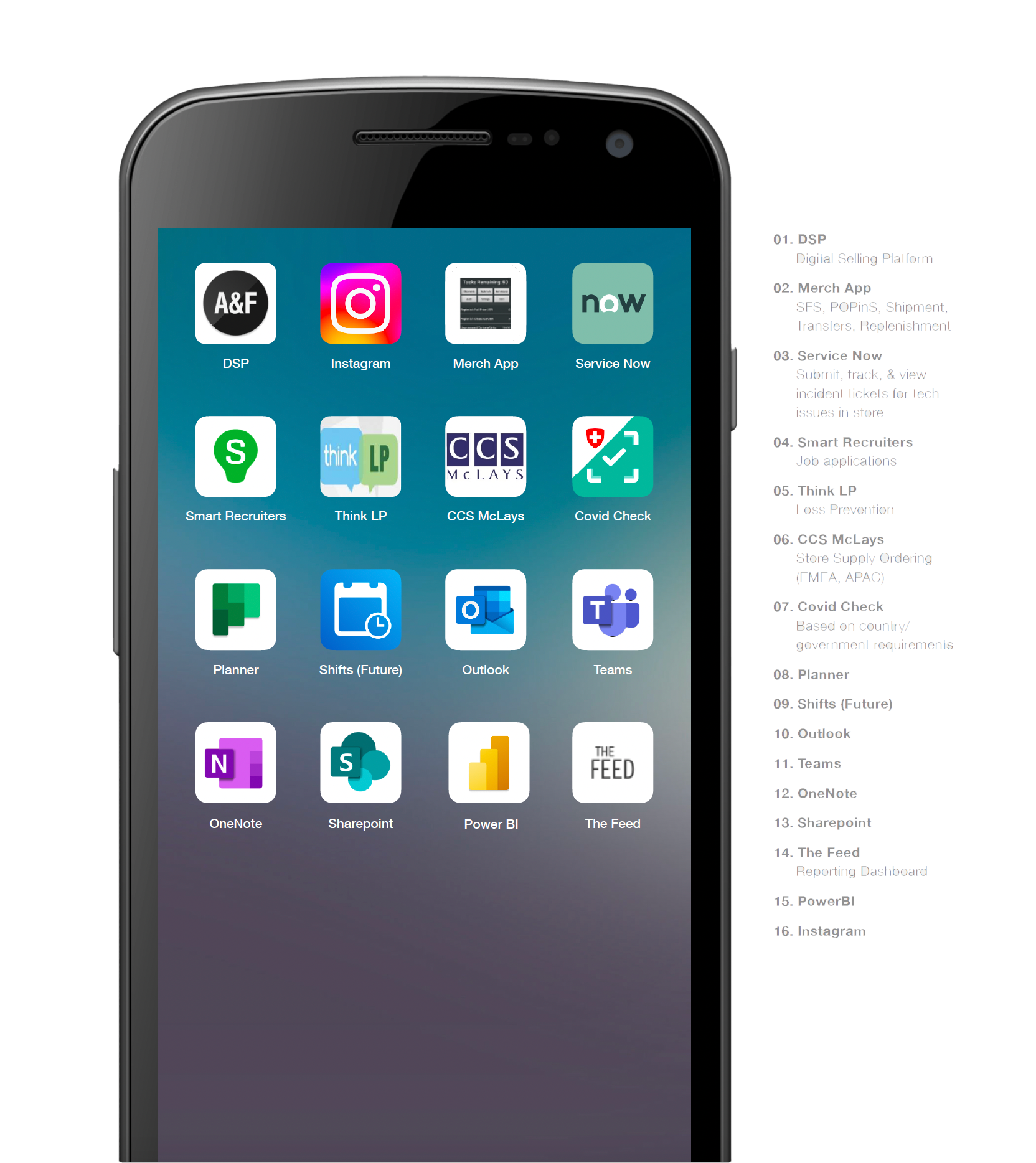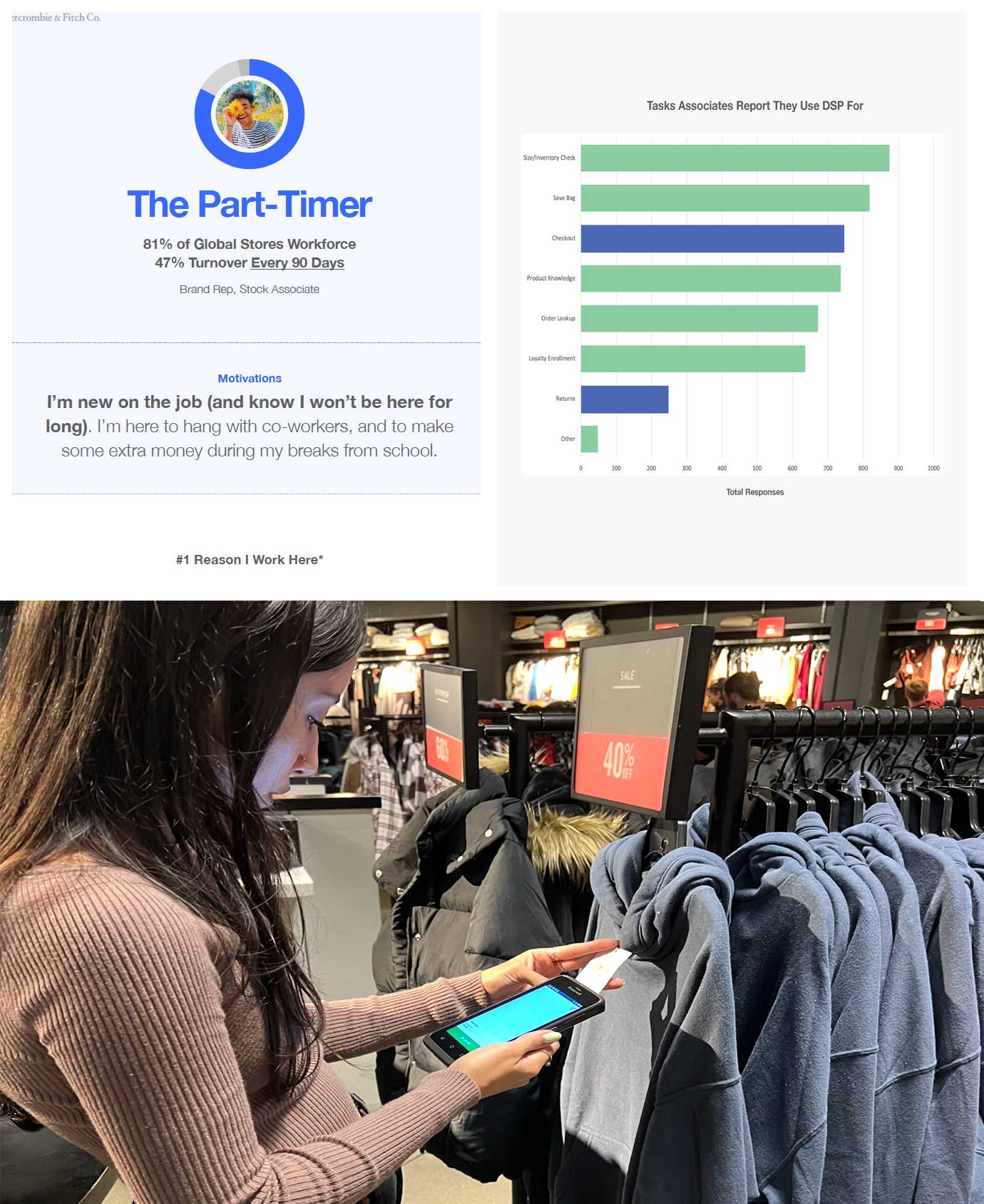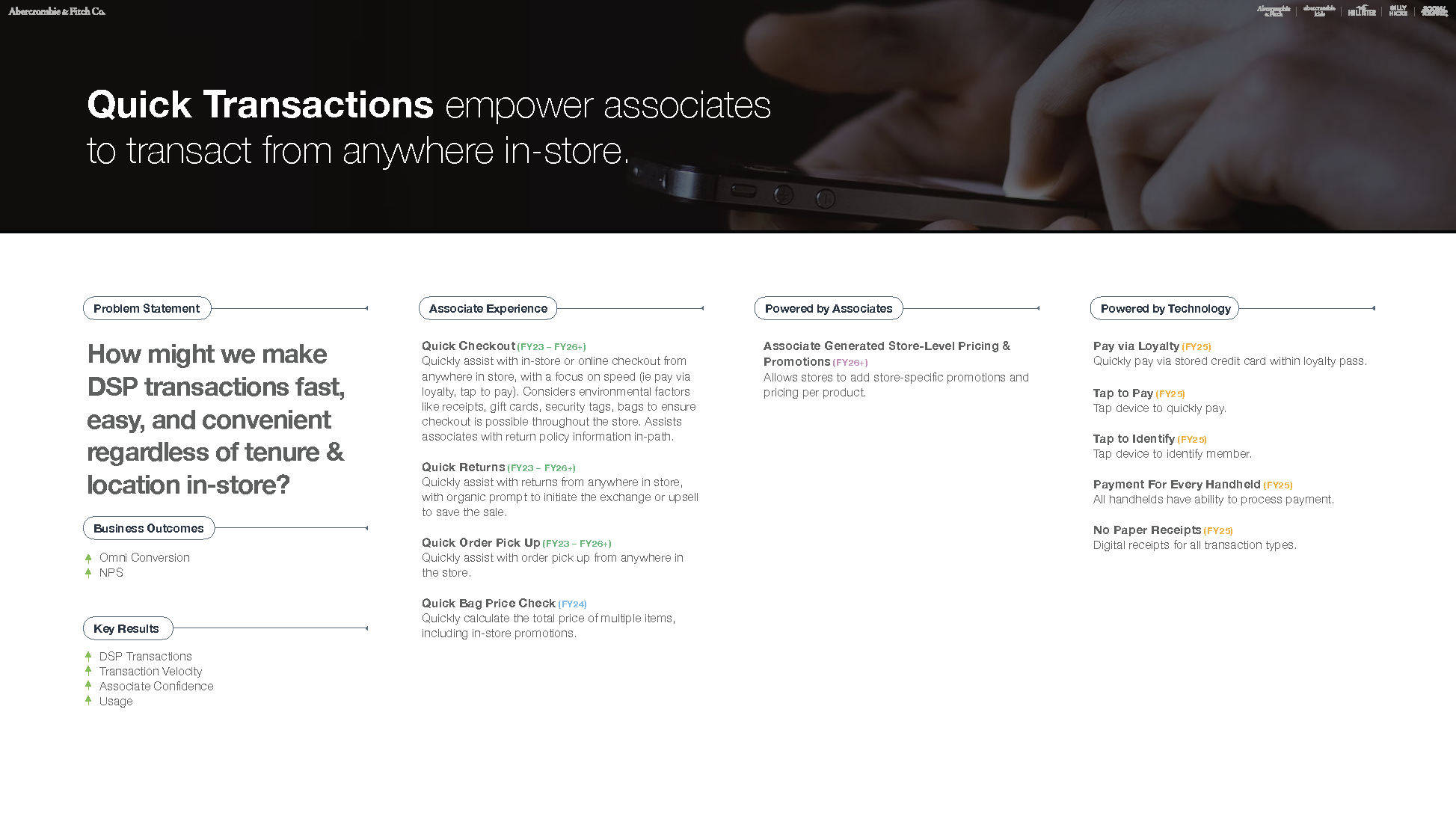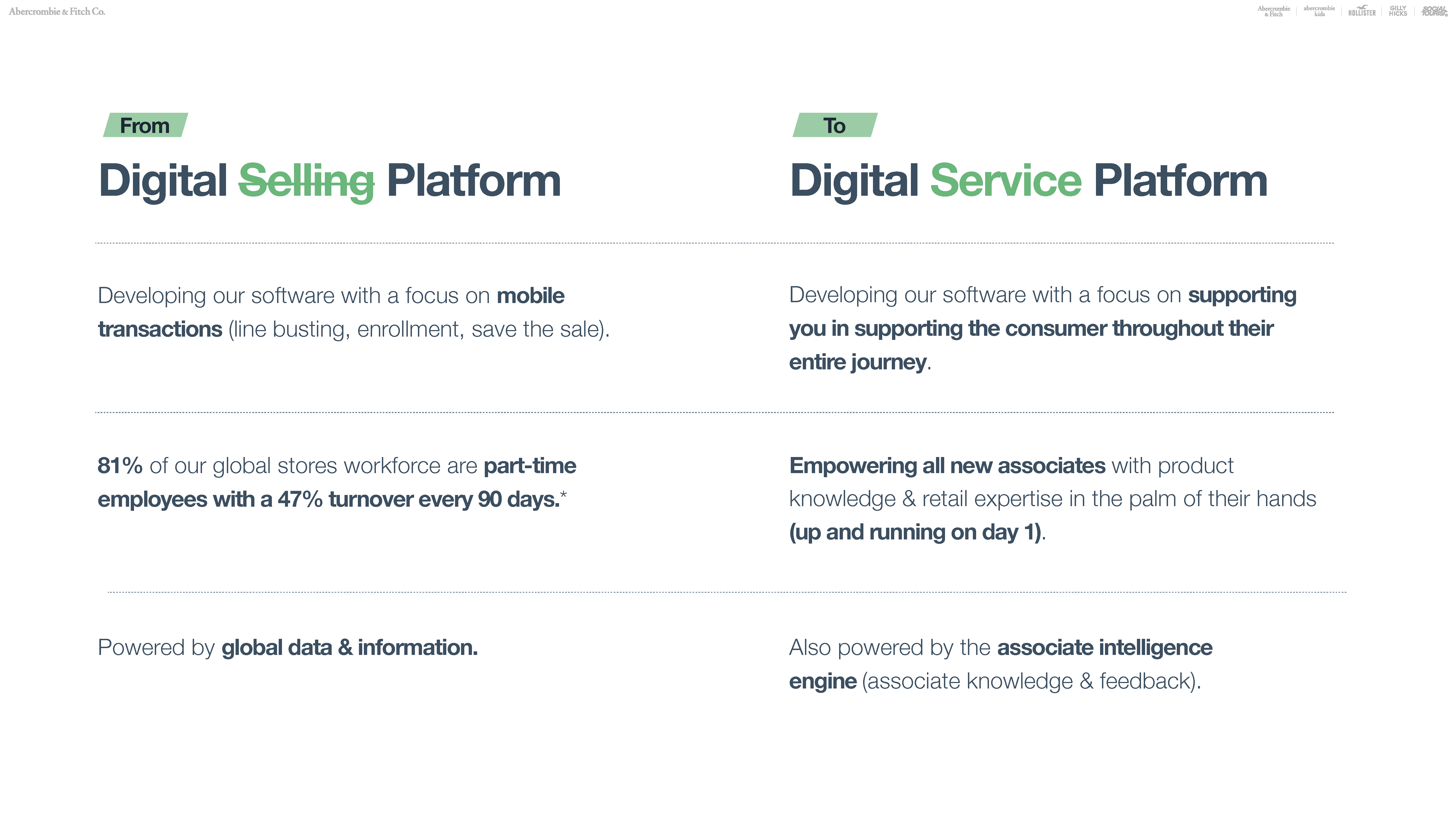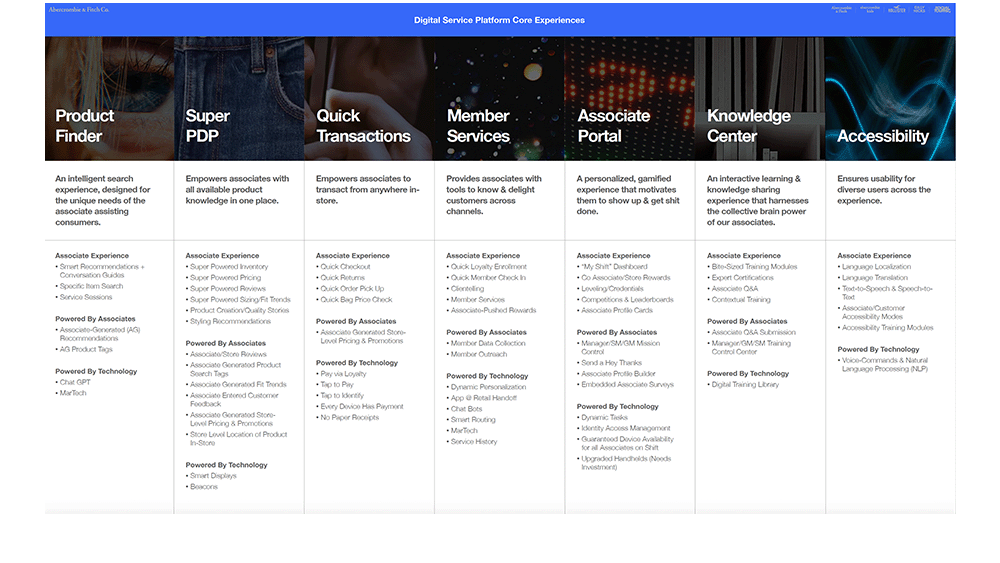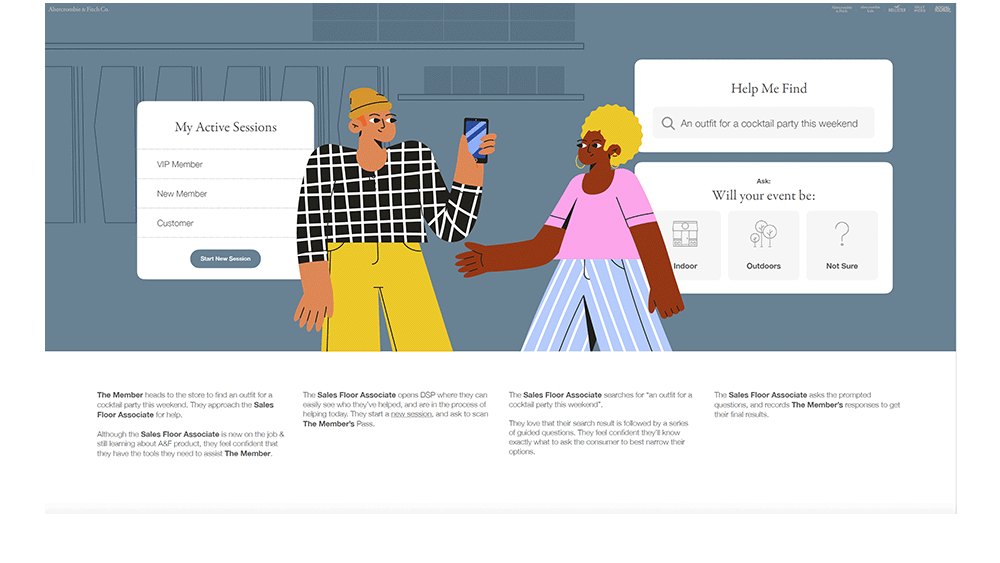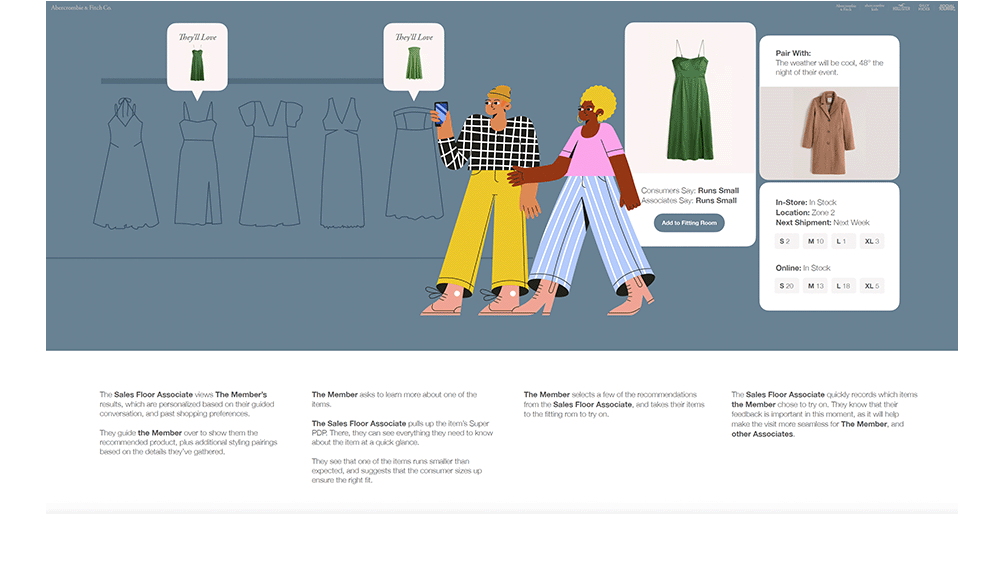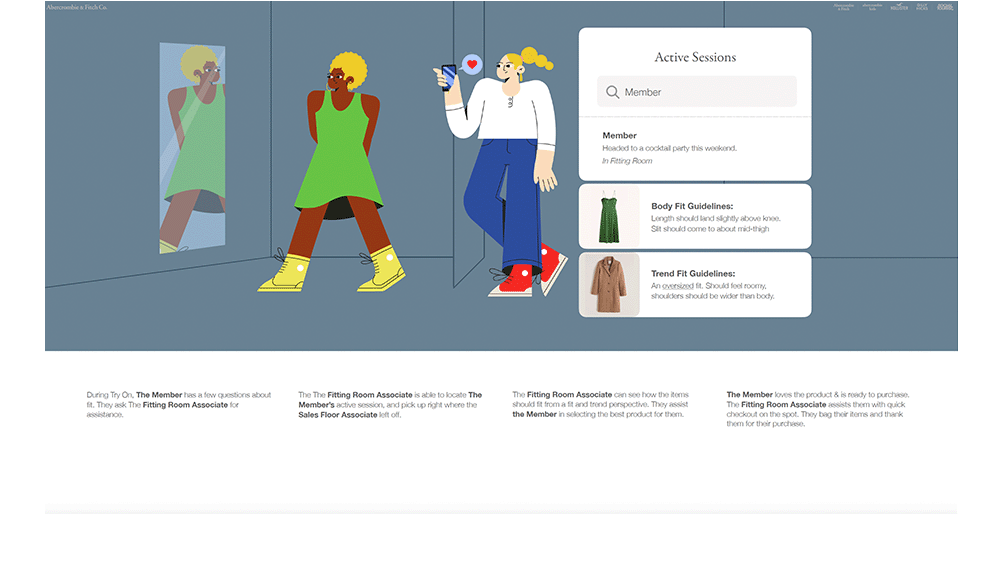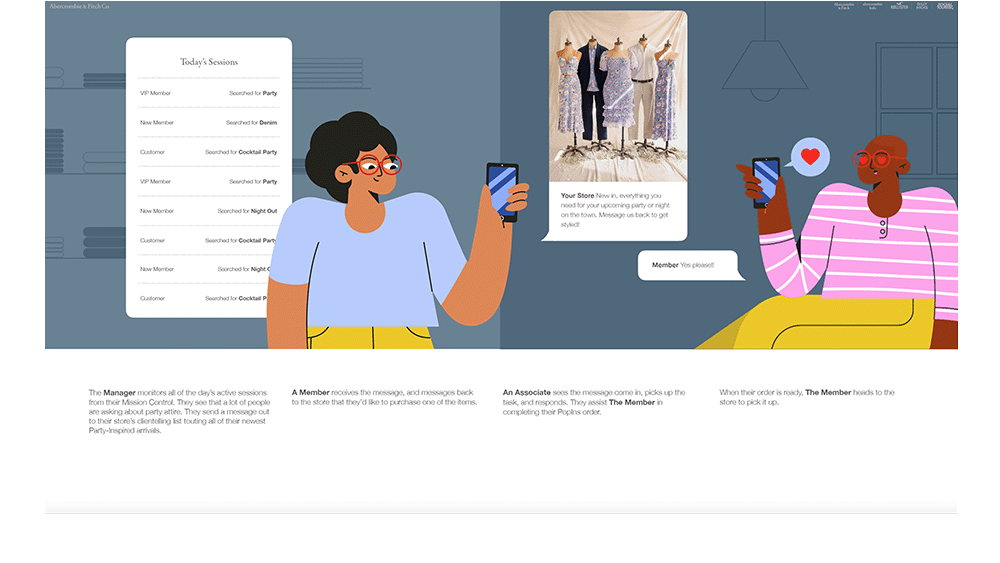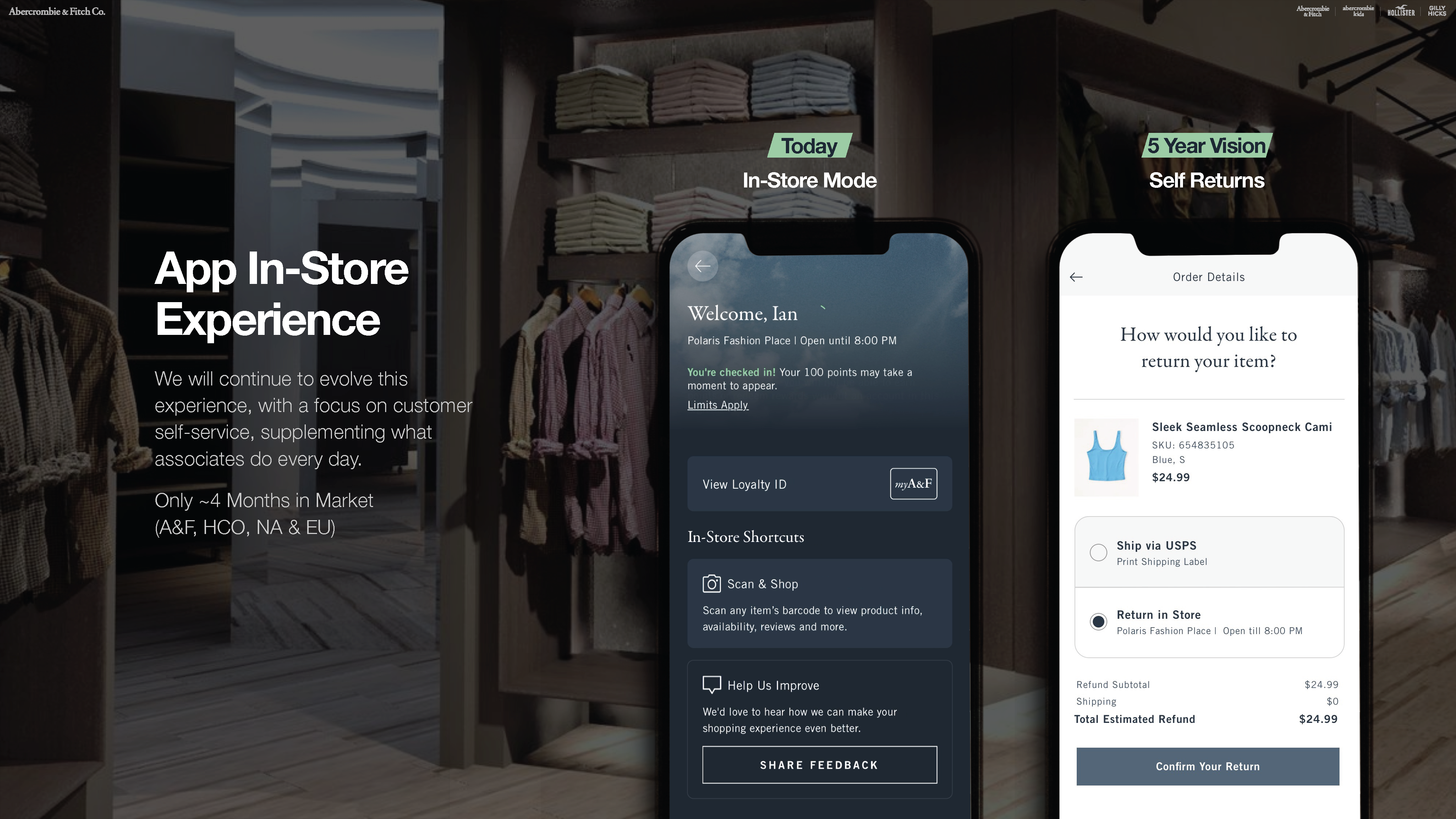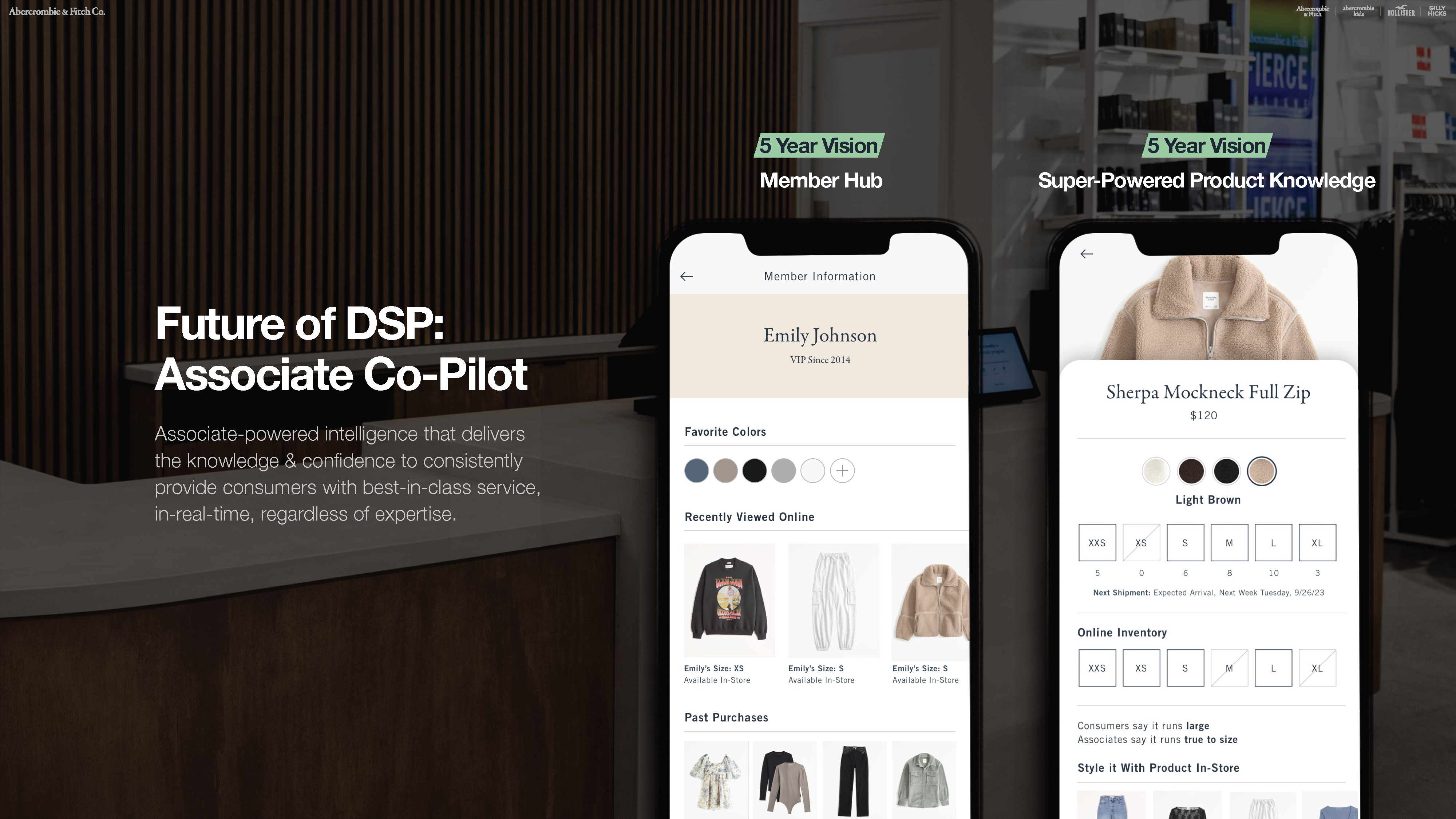To answer the big ask, we stepped out of the conference room and into the store. The goal wasn’t just to gather data—it was to understand how associates felt (their “why”), how they worked (their “jobs to be done”), and where DSP fit into their day.
We began by looking and listening from every angle, including:
We started with the data.
An analysis of voice-of-customer feedback across all brands revealed that 73% of in-store experience comments mentioned associate interactions—clear evidence that human connection drives the brand experience.
Operational data told a similar story: stores meeting DSP utilization goals saw 4% higher average transaction values and 6% higher NPS scores.
We also conducted a global survey of 963 associates across roles and regions to understand technology preferences, usage patterns, and pain points, and paired these findings with internal benchmarks and competitive best-in-class research to identify where DSP stood in the broader retail landscape.
Numbers told us "what" was happening—field research helped us understand the "why".
We conducted store visits across 12 locations in the U.S. and Canada, observing associates in real time through “day in the life” ethnographic research to see how they balanced customers, tasks, and technology on the sales floor.
We also led one-on-one interviews with associates and leaders—from brand representatives to district managers—to explore their motivations, challenges, and ideas for improvement.
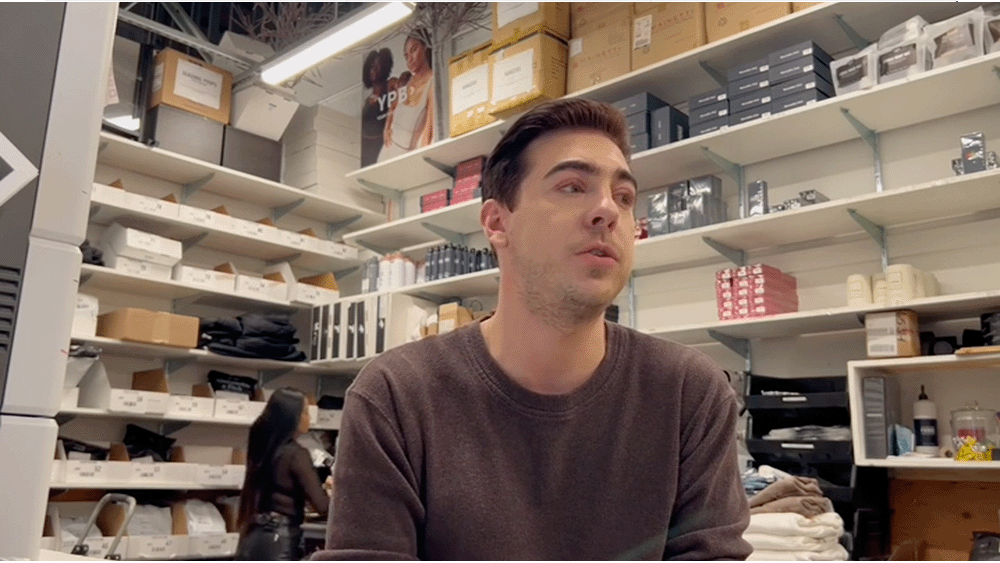
How associates really use DSP
What emerged was a clear picture of who our users really were, how their needs differed by role and tenure, and where the gaps in confidence, knowledge, and connection lived. We saw how DSP supported quick tasks but failed to support the full arc of service—the moments of learning, teamwork, and customer interaction that drive real impact.
We realized that DSP wasn’t failing because of lack of adoption—it was failing because it wasn’t designed around the way associates actually needed it to work to serve the customer, their team, and the brand.
That became our moment of clarity:
It wasn’t a product problem — it was a human-to-digital problem with business consequences.
That understanding revealed just how much was on the line.
The challenges weren’t limited to a single tool or process—they rippled across every part of the in-store ecosystem.
On the surface, DSP appeared to be a technology issue. In reality, it exposed a human-to-digital disconnect that reached every corner of the business.
Each department was measuring success through its own narrow lens:
- Store Operations focused on task completion and transaction speed.
- Digital tracked conversion and checkout efficiency.
- HR & Training measured onboarding and turnover.
None of those metrics reflected how associates or customers actually experienced the brand.
When we viewed the end-to-end journey through the lens of the customer, associate, brand, and business, the picture became clear:
fragmented ownership, disjointed tools, and competing priorities were holding back the in-store experience.
Therefore, the opportunity wasn’t to fix a product— it was to connect an ecosystem.
To build shared accountability, align metrics to human outcomes, and create the foundation for a connected experience that empowers associates, delights customers, and drives business growth.
